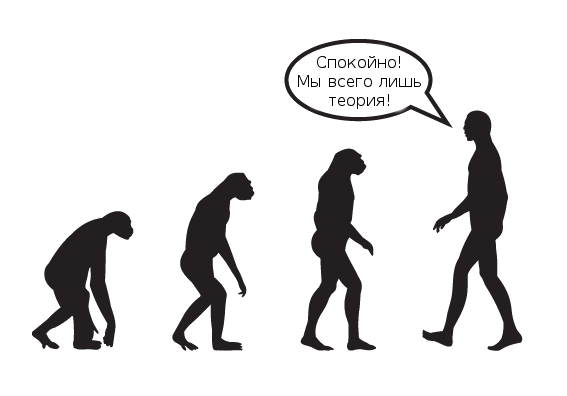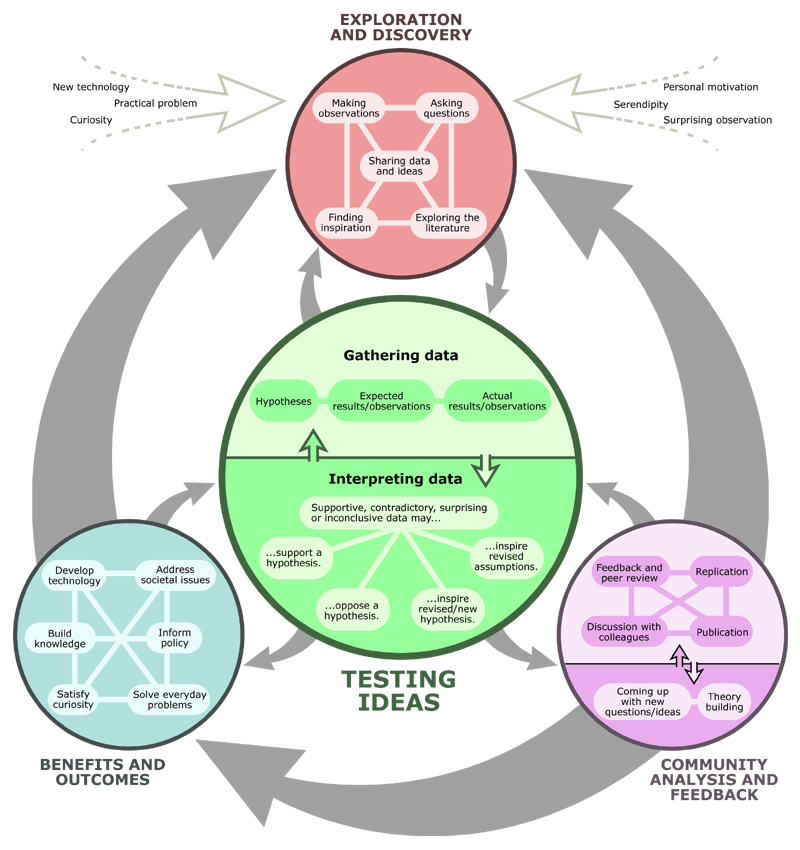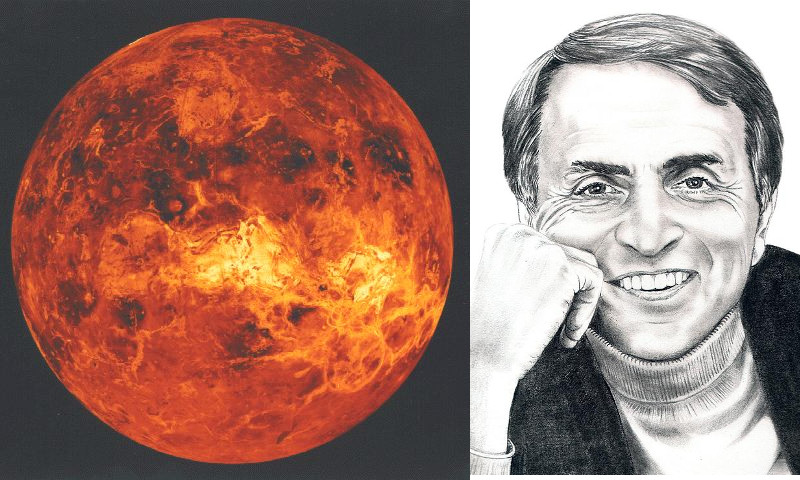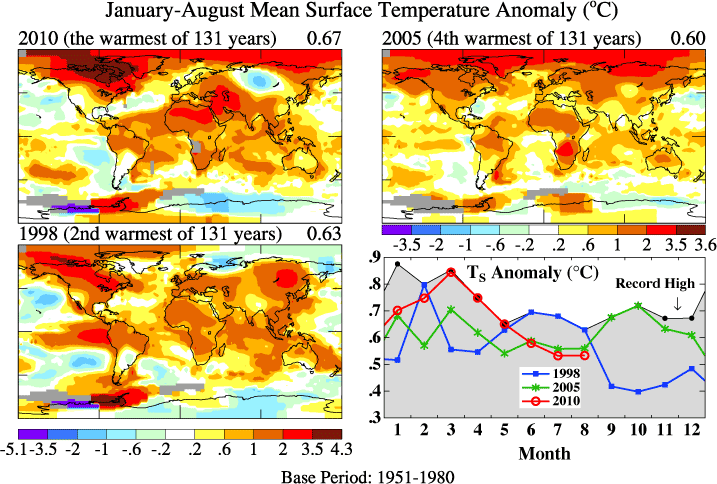What is the theory and where does the scientific method
I have a theory that any phrase can be turned into something seemingly incredibly profound, if at the end we assign the name of some ancient philosopher. Plato ( original ).

Theory (Greek θεωρία - consideration, research) - the doctrine, the system of ideas or principles ( wiki ). It is in this, the broadest sense in the usual speech, we use the word "theory" in everyday speech. For example, I have a theory why the car will not start - some set of ideas and conclusions explaining the breakdown. However, in the scientific world, theory has a rather strict and formal meaning and necessarily meets a certain set of important criteria.
There are a lot of pictures and examples under the cut, and there are no formulas at all.
')
Scientific method

(picture from here )
Consider and discuss the main stages of the scientific method in the examples. In this article we describe the following steps:
- Observations and questions
- Formation and basic properties of the hypothesis and theory
- Interpretation of data and conclusions
Certainly, it is impossible to cover all the properties and details of the methodology and work, fill in the gaps and study the material in an interactive form on the Berkley portal - Undrestanding Science 101 .
Observations and questions

(picture from here )
We illustrate this stage with the famous legend about Newton and the apple:
After lunch the weather was warm, we went out into the garden and drank tea in the shade of the apple trees. He [Newton] told me that the thought of gravity occurred to him when he was sitting under a tree in the same way. He was in a contemplative mood when an apple suddenly fell from a branch. “Why do apples always fall perpendicular to the ground?” He thought.
The first stage of the scientific method is observation: is there a common feature among the observed events, is there any unusual feature, is it possible to apply some new technology under standard conditions, etc. Hand in hand with observations, questions come up: it is necessary to choose what is necessary and important from observations for further research. In many ways, questions define observations, but observations also define questions — in fact, they should be considered exclusively together.
But questions and observations relate exclusively to the real-physical world, i.e. atoms, people, galaxies, society, plants. In other words, the “supernatural” lies outside the issues considered in the framework of the scientific method.
The basis of the scientific method : hypothesis, data and relationship

(photo of Venus taken from here )
As an example, consider the hypothesis (prediction) of Karl Sagan on the surface of Venus ( wiki ).
In the 60s no one imagined what the conditions really are on Venus. Then in 1960, Carl Sagan put forward the hypothesis that the surface of Venus is dry and has an incredibly high temperature. The hypothesis was at odds with the view of others that the surface of Venus may be suitable for life ( dinosaurs on Venus ). After hypothesizing, he began to study the available data (radio emission) from Venus, and came to the conclusion that the surface has a temperature of 500 ° C. In 1962, the Mariner 2 (automatic interplanetary station) passed close to Venus and confirmed Sagan’s forecast of its climate.
What interesting property does this hypothesis have? This hypothesis can be refuted, since it makes certain and specific predictions that can be tested. This property is called falsifiability (the name Popper criterion is also found). Note that if the hypothesis satisfies the Popper criterion, this does not at all mean that the hypothesis is correct. For example, the hypothesis - “the sun consists entirely of pistachio ice cream” satisfies this criterion, but the hypothesis is not true.
Imagine for a moment that we abandon this criterion in the hypothesis, then we get an interesting situation described by Russell in the 1952nd year.
Russell's teapot

Russell writes the following letter to Illustrated magazine:
Many believers behave as if not dogmatists should prove the generally accepted postulates, but on the contrary, skeptics are obliged to refute them. This is definitely not the case. If I began to argue that a porcelain teapot rotates around the Sun in an elliptical orbit between the Earth and Mars, no one could refute my statement, I added prudently that the teapot is too small to detect it even with the most powerful telescopes. But I further stated that, since it is impossible to refute my statement, a reasonable person has no right to doubt its truth, they would rightly point out that I am talking nonsense. However, if the existence of such a teapot was stated in ancient books, its authenticity was repeated every Sunday and this thought was hammered from childhood into the heads of schoolchildren, disbelief in its existence would seem strange, and doubting it was worthy of the attention of psychiatrists in the enlightened era, and earlier Inquisition.
In fact, Russell Maker demonstrates a hypothesis that, in its formulation, contains its own irrefutable. What is falsifiability? This is a fundamental opportunity to conduct an experiment that would disprove this hypothesis. It would seem that this is just a statement about the property of the hypothesis, but it implicitly also contains another important property - the ability of the hypothesis to make predictions, that is, describe some new unknown properties and / or phenomena.
How is the ability of a hypothesis to predict something related to falsifiability? If a hypothesis predicts something that something happens, it means that it predicts that something will NOT happen. The falsified hypothesis predicts that some event will NOT happen - this is the very same disproving experiment (if event A does not happen, it means that some other event B eg A - temperature on Venus 50C and below, event B - temperature on Venus above 50 degrees).
Interpretation of data and results

(graphics are taken from NASA Data.GISS)
Imagine that your task is to estimate the growth (change) of the earth's temperature over time. What will be the source data? What parameter needs to be estimated? What regions should be averaged? What does it mean to average in this case?
In fact, never obtained data do not agree with the predictions - first of all, this is due to various inaccuracies, random (and not only) factors. Therefore, first of all, they talk about the degree of confidence in the results and give a certain confidence interval for the results. For example, we can present the following statement: we have a 95% certainty that the average temperature in Samara in summer is between 21 and 26 degrees. This means that if we randomly choose a year and measure the average temperature for a year in a city, then in 95% of cases the average value will lie in this interval. Thus, working with data, we always specify some limits of applicability and confidence in the data.
In general, the task of interpreting and working with data does not have any single and universal approach, but there are general norms that should be paid attention to: the presence of assessments for the degree of confidence in the data, the calculation of statistical errors and no less important correspondence of data to common sense. We give a classic example.
The dependence of global warming on the number of pirates in the Caribbean

This example illustrates that the correlation between the data is not equivalent to the presence of a causal relationship (as shown by the famous statistician Fisher 150 years ago).
The search for cause-and-effect relationships is a separate topic; it is only worth noting that this process is much more laborious and not always possible.
And then the evolution and media
The classic phrase: “evolution is only a theory”, which sounds in a completely different context is primarily due to a misunderstanding of the term “theory” that is used in science. Evolution is a theory in the same sense as Newton's gravity and quantum mechanics (the difference between law and theory is written here ).
But even more important for us is the use of the term "theory" when it comes to various information resources. Before accepting any statement (for example, “ New Chronology ” or “theory” of Velikovsky's catastrophes), it is necessary to make sure that this theory is really developed in accordance with the methodology.
Conclusion
The most beautiful thing we can feel is uncertainty and mystery. This is the source of real art and science. The one to whom this feeling is alien, the one who cannot stand still in amazement, is like dying - because his eyes are closed.( source )
original
“The most beautiful thing we can experience is the mysterious. It is a true science and science. It is a stranger that he has been stranger. "( Source )
The most important feature and peculiarity of the method is its ability to change our understanding of the world around us - our knowledge and perception of the world are not static, and all the time they change, pushing the border of the unknown a little bit. This is what makes him different from everything else - he admits that we still don’t know much and that we have a long way to go to find out.
Source: https://habr.com/ru/post/210386/
All Articles